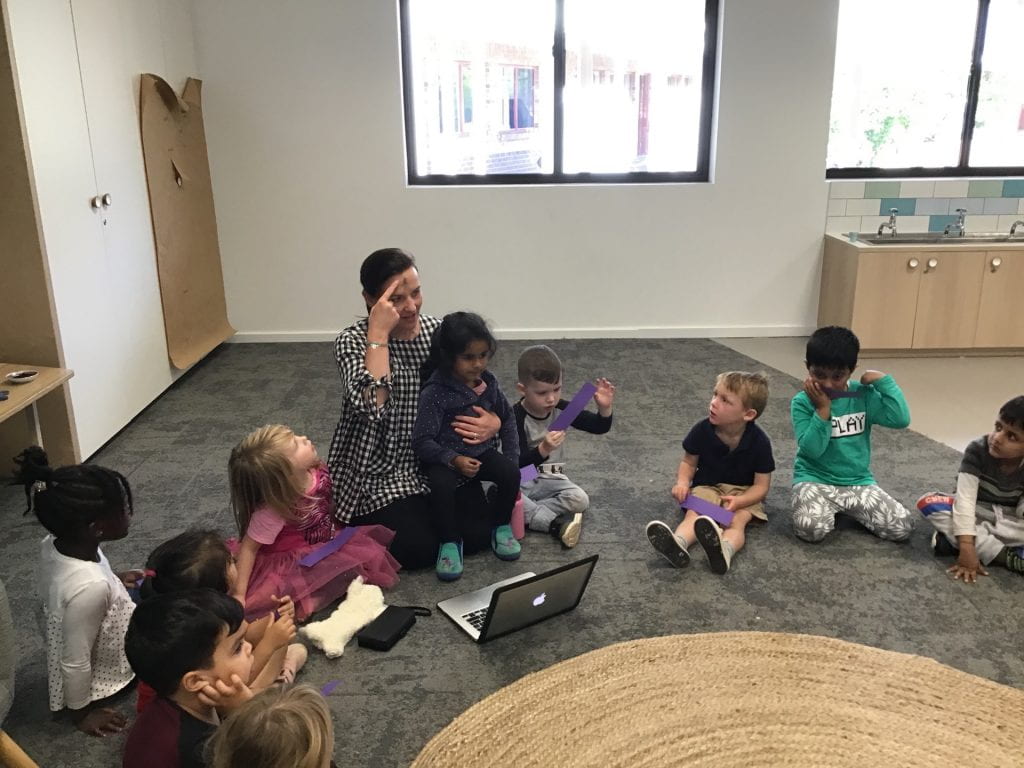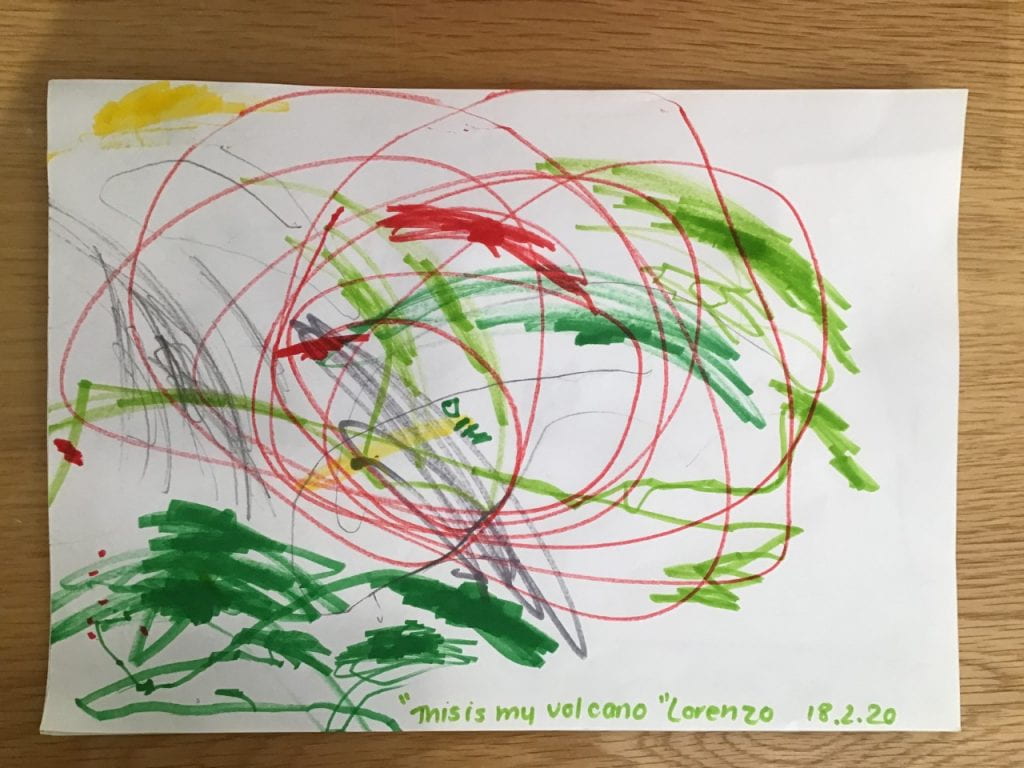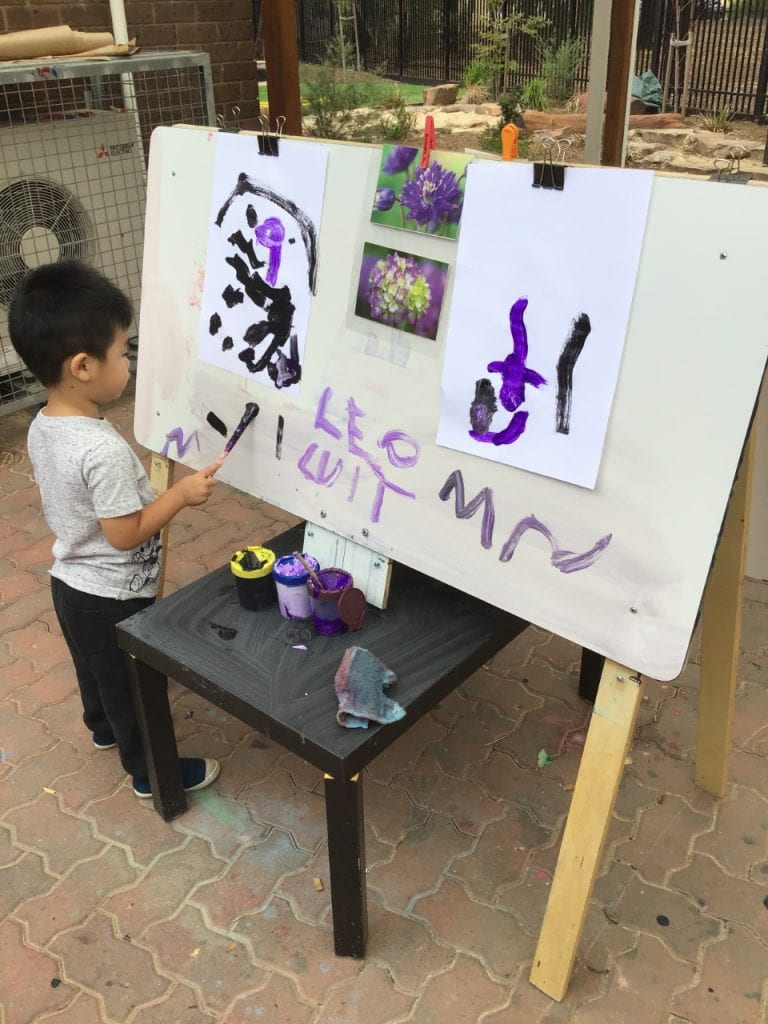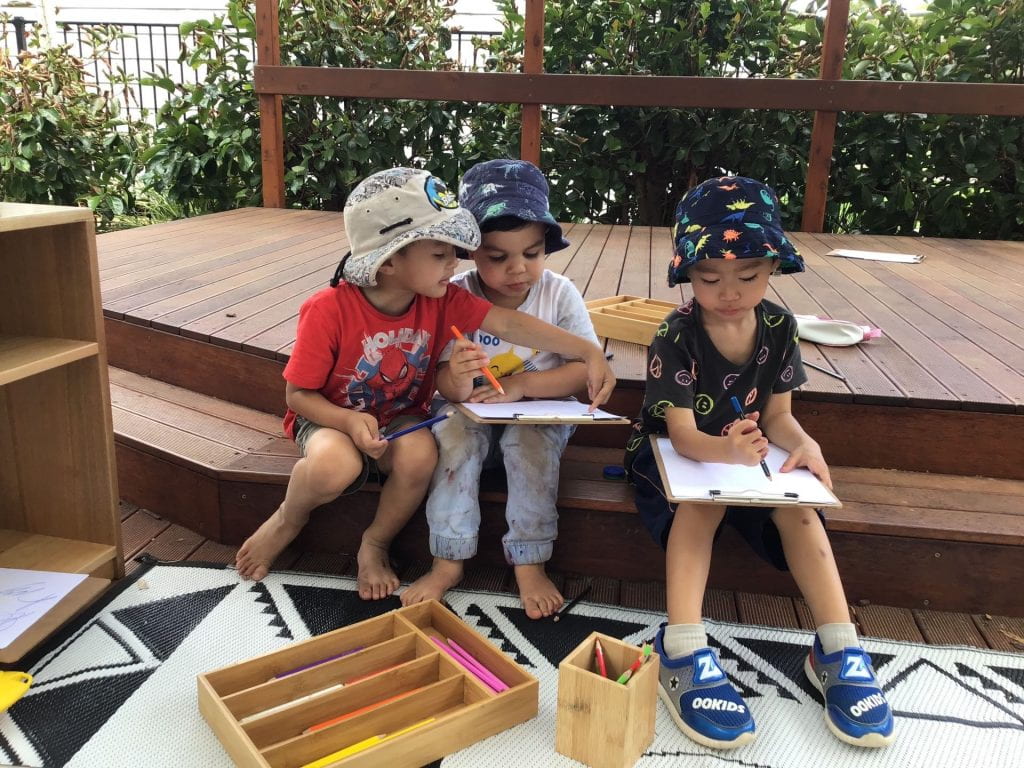Over the last couple of weeks we noticed that routines and transitions in St. Anne’s Room have had an increasingly smooth flow. As educators, we believe that throughout the routines and transitions of the day there are valuable learning opportunities for all children, such as; relationship building, supporting a sense of belonging and identity, language and skill development and independence. These opportunities may arise during transitions from one space to another or when handwashing for snack or organising their bowl, cup and cutlery for lunch time and so on.
All aspects of the program, including routines, are organised in ways to maximise opportunities for each child’s learning. (The National Standard, ACECQA, revised 2018)
One part of the routine that has particularly shown development is the transition the children make from their play, inside or outside, to group times. The children are now familiar with the group they are in, Murraya or Grevillea, and know which end of the room they have group time in. As soon as they hear the bells for group time there are children sitting ready for their peers to join them. This has supported the children that have started recently, they learn from the children who are familiar with the routine. We have also introduced visuals into the environment to support the inclusion of all children in routines and with transitions, ie. a visual timetable using photographs and pictorial symbols that the educators use with the children.
The sense of belonging to a group has developed, Emannoop was concerned when he noticed that his Grevillea group sign on the door had disappeared, he searched high and low until he found it. The children are beginning to use the words Grevillea and Murraya too. Belonging to a group is supporting a sense of identity. When children feel they belong they are more receptive to learning.
Our image of the child is rich in potential, strong, powerful, competent, and, most of all, connected to adults and other children. (Loris Malaguzzi, Young Children 1993)
Group times offer opportunities for children to be connected. Learning is evident throughout the routine but we have noticed that group times have become a time where the children enjoy being together with their peers and experiencing shared learning. Group times are the part of the routine where we routinely focus on Prayer, discussing bucket filling and specks of gold. This week Murraya group have also been learning about Australian animals, their habitats and the sounds they make. We had positive feedback from Casey, Mason’s mum, she told us how amazed she was that Mason was talking about Kookaburras at home. The Grevillea group had a focus on colours, a particular interest of Max’s. We read ‘Where is the green sheep?’, mixed colours, made shades of colours and played games involving colours.
The children demonstrate their independence throughout the routine. They have become particularly capable at organising their own rest mats before lunch and then after resting; cleaning them and putting them away. It is also lovely to see the children helping each other when required. An example of this was when Aria showed her new friend, Anna, every step of the process with the mats. Xavier is often observed helping others lift their mats into the storage cupboard to pack them away.
The children are involved in designing the routines, this has shaped Grevillea Prayer time, for example. Eva asked if she could set up the space for prayer time with the Bible, the statue of Mary, Joseph and Jesus and other resources, we now do this every day, the children love having the responsibility for certain jobs. This also provides an opportunity to develop their emerging autonomy.
When routines and transitions are consistent and predictable, as they are for the children in St. Anne’s Room, they can contribute to a positive learning environment.
Links to The Early Years Learning Framework
‘Children feel safe, secure and supported and use effective routines to help make predicted transitions smoothly’
‘Children develop their emerging autonomy, inter-dependence, resilience and sense of agency’
Outcome 1: Children have a strong sense of identity (Belonging, Being and Becoming: The Early Years Learning Framework for Australia, 2009)
Links to our philosophy
We will provide an emergent and responsive curriculum for all children based from the philosophy of the service, provocations of educators and children’s strengths and interests as well as the interests of the group.



























